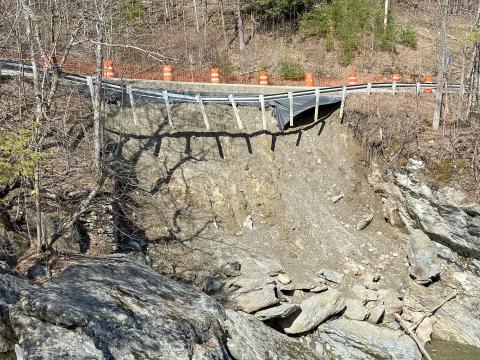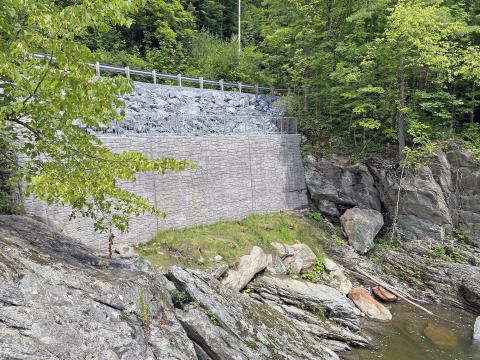Four years ago, engineer Tyler Billingsley woke up after taking his kids trick-or-treating to dozens of texts: Dugway Road in Richmond, Vermont, had washed out. Over Halloween night, heavy rain had swollen the Huntington River, destroying 60 feet of an old stone retaining wall and the eastbound lane over it.
“It was lucky [the road foreman] closed the road when he did,” said Billingsley. “It was vertical, facedown to the river. The water was only two feet lower than the wall is now.”

The town knew they’d have to reopen Dugway Road quickly: families frequented the road to bike through its fields and evergreen farms, as well as swim in the pools that dot the river. But they also knew it wouldn’t make sense to just recreate the old wall.
“It was 250 years old,” said Josh Arneson, the town manager. “You couldn’t just rebuild that, no engineer in their right mind would’ve done it. We needed more help.”
So, the town applied for FEMA’s Mitigation program, which provides grants to help rebuild damaged infrastructure with measures that prepare it for future weather. Arneson said it turned out to be a smooth process – helped by Richmond’s dedicated community.
“Normally in the pre-bid meeting, you’d see five, six contractors – we had 20. Everyone wanted to help.”
Arneson and his team selected Billingsley’s company for the project, which drafted a design that would set the retaining wall forward from the road, build it with durable concrete, and carve out drains to direct water flowing down the hillside under the road instead of onto it.
“We analyzed what it would take to rebuild to what it was, and saw that wasn’t the best, safest or cheapest option,” Billingsley explains. “Then we found a better way to do it, and we and FEMA agreed: let’s go that route.”
Richmond Land Trust donated land to accommodate the new wall and landowners down the road gave crews access to their property so they could safely reach the build site. FEMA approved funding for both the wall and a textured finish to help it blend into the hillside, preserving the natural beauty that draws outdoor enthusiasts to the road.

The new wall was tested this July, when up to 9 inches of rain fell over Vermont, flooding Richmond’s roads and inundating the gorge. This time, the retaining wall held the river back – as Billingsley knew it would.
“I would’ve lost sleep if we’d built an old stone wall again – it would’ve washed out,” he said. “We definitely built it the right way.”
Arneson recommends other towns rebuilding from disasters look into FEMA mitigation grants.
“Make your case for the best repair possible,” he said. “Fix it to protect it.”


